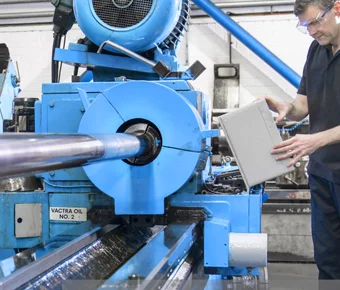1.4404 || 1.4401 || 316L || 316
Stainless austenitic chromium-nickel-molybdenum steel with low carbon content
The material 316 L is a stainless austenitic chromium-nickel-molybdenum steel which has low carbon content and a better resistance to corrosion than molybdenum-free products. 316 L is very malleable when cold and can be welded well. The material is applied especially in the chemical, paper and textile industries, also in the production of pipes, in apparatus engineering as well as for sanitary facilities.
Stainless steel
- Good weldability
- High resistance to general corrosion
- Good resistance to intergranular corrosion
- Good cold formability
- High tensile strength
316 L applications
- Chemical industry
- Plant engineering
- Food industry
- Tank and apparatus engineering
- Petrochemical industry
- Pulp / Paper industry
Chemical values – Reference analysis (weight proportion in %)
| Value | Proportion % |
|---|---|
| C | ≤ 0,03 |
| P | < 0,045 |
| S | ≤ 0,03 |
| Si | ≤ 1,0 |
| Mn | ≤ 2,0 |
| Cr | 16,5 – 18,5 |
| Mo | 2 – 2,5 |
| Ni | 11 – 14 |
Mechanical values at room temperature
| Tensile strength N/mm² | 90 – 690 |
| Tension elastic limit Rp 0,2 N/mm² | ≥ 190 |
| Breaking elongation A5 % | 40 |
Assignment to current and older standards
- Designation according to DIN: X 2 Cr Ni Mo 17-12
- ASTM Grade: 316L
- EN: 1.4404
- ASME: 316 L
- AFNOR: X2CrNiMo 17-12-2
- DIN: 1.4404
- SIS: 2348

Tables and rates

Scope of delivery
Haven’t found the right steel?
We offer you the complete range for stainless steel piping systems, in different materials and for the highest demands.








